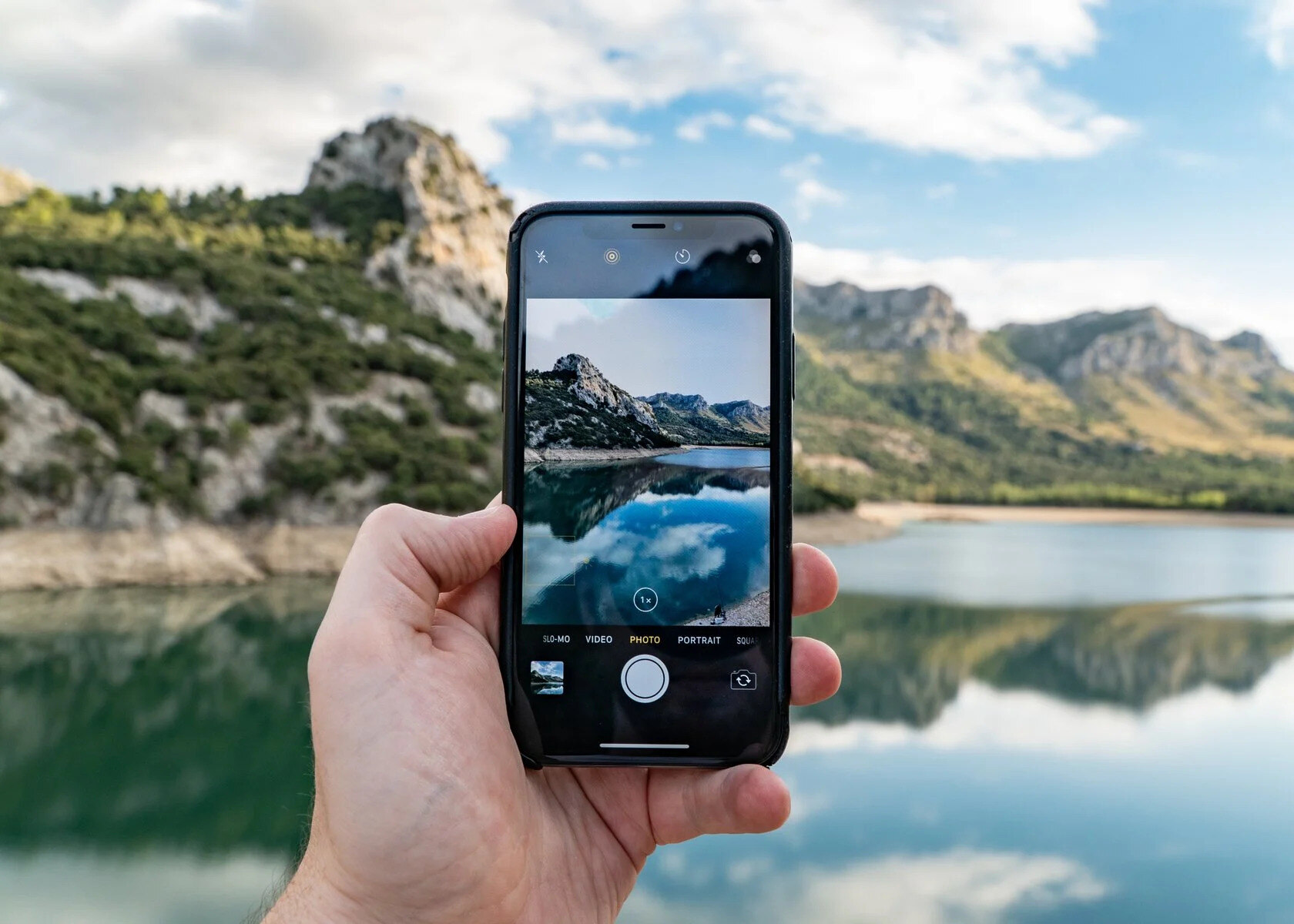What is HDR and How Does it Work on iPhone 13
HDR, or High Dynamic Range, is a feature that has revolutionized the way we capture and view images on our smartphones. It works by combining multiple exposures of the same scene to create a single image with a wider range of colors and tones. This results in photos that are more vibrant, detailed, and true to life.
On the iPhone 13, HDR is seamlessly integrated into the camera system, allowing users to capture stunning photos and videos with enhanced dynamic range. When HDR is enabled, the iPhone 13's camera automatically analyzes the scene and captures multiple exposures at different brightness levels. These exposures are then merged to create a final image that preserves details in both the highlights and shadows, resulting in a more balanced and visually appealing photo.
The iPhone 13's HDR feature is particularly effective in challenging lighting conditions, such as scenes with high contrast between light and dark areas. By capturing a range of exposures and combining them into a single image, HDR helps to retain details that would otherwise be lost in the shadows or blown out in the highlights.
Furthermore, the iPhone 13's HDR extends beyond just photos, as it also enhances the quality of videos. When shooting videos with HDR enabled, the camera captures a wider range of colors and tones, resulting in more lifelike and immersive footage.
In summary, HDR on the iPhone 13 is a powerful tool that significantly improves the quality of photos and videos by expanding the dynamic range and preserving details in challenging lighting conditions. It's a feature that empowers users to capture the world around them with greater fidelity and visual impact.
Reasons to Disable HDR on iPhone 13
While HDR technology on the iPhone 13 offers numerous benefits for capturing stunning photos and videos, there are specific scenarios where disabling HDR can be advantageous. Understanding these situations can help users make informed decisions about when to turn off HDR on their iPhone 13. Here are several reasons to consider disabling HDR:
-
Artistic Intention: In some cases, photographers may prefer to have full control over the dynamic range of their images. Disabling HDR allows them to capture photos with intentional overexposed or underexposed areas, which can contribute to a specific artistic style or mood. By turning off HDR, photographers can achieve creative effects that align with their artistic vision.
-
Faster Capture Speed: While HDR processing on the iPhone 13 is incredibly efficient, there are instances where users may prioritize speed over enhanced dynamic range. Disabling HDR can result in faster capture times, which can be beneficial when photographing fast-moving subjects or when immediate responsiveness is crucial.
-
Preserving Original Scene: In certain situations, users may prefer to capture the scene exactly as they see it without any enhancement or tone mapping. Disabling HDR ensures that the photo reflects the original lighting conditions and contrast levels, providing a faithful representation of the scene without any artificial adjustments.
-
Reducing Storage Space: HDR images typically require more storage space due to the multiple exposures and additional data captured. For users with limited storage capacity on their iPhone 13, disabling HDR can help conserve space, especially when capturing a large number of photos and videos.
-
Minimizing Artifacts: While HDR processing is designed to improve image quality, there may be rare instances where artifacts or anomalies are introduced, particularly in scenes with high motion or intricate details. Disabling HDR can mitigate the risk of such artifacts, ensuring a cleaner and more natural representation of the subject.
-
Consistent Look Across Frames: When capturing a series of photos for a specific project or purpose, maintaining a consistent look and exposure across all frames may be essential. Disabling HDR ensures that each image in the series maintains a consistent exposure level, which can be advantageous for certain types of photography or visual storytelling.
By understanding these reasons to disable HDR on the iPhone 13, users can make informed decisions based on their specific photographic needs and preferences. While HDR technology undoubtedly enhances the overall imaging experience, having the flexibility to disable it when necessary empowers users to adapt to diverse shooting conditions and creative objectives.
How to Disable HDR on iPhone 13
Disabling HDR on the iPhone 13 is a straightforward process that gives users control over the dynamic range of their photos and videos. Whether it's for artistic expression, faster capture speed, or preserving the original scene, knowing how to disable HDR can be valuable in various shooting scenarios. Here's a step-by-step guide to turning off HDR on the iPhone 13:
-
Open the Camera App: Begin by launching the Camera app on your iPhone 13. This can be done by tapping the Camera icon on the home screen or swiping to access the Camera from the lock screen.
-
Locate the HDR Option: Once the Camera app is open, look for the HDR option, which is typically represented by the letters "HDR" and is often located at the top or in the settings menu of the Camera interface.
-
Toggle HDR Off: Tap the HDR option to access the available settings. Depending on the iPhone 13 model and software version, you may see different options such as "Auto," "On," or "Off." Select the "Off" option to disable HDR.
-
Capture Photos and Videos: With HDR disabled, you can now capture photos and videos with the standard dynamic range. Keep in mind that when HDR is turned off, the camera will not merge multiple exposures, and the resulting images and videos will reflect the original contrast and lighting conditions of the scene.
By following these simple steps, users can easily disable HDR on their iPhone 13, providing them with greater flexibility and creative control over their photography and videography. Whether it's for specific artistic intentions, faster shooting speeds, or maintaining a faithful representation of the original scene, the ability to disable HDR empowers users to adapt to diverse shooting conditions and achieve their desired visual outcomes.
This straightforward process ensures that users can seamlessly toggle HDR on or off based on their specific needs, allowing them to make the most of the advanced camera capabilities of the iPhone 13 while tailoring the dynamic range to suit their individual preferences and creative objectives.
When to Disable HDR on iPhone 13
Understanding when to disable HDR on the iPhone 13 is crucial for photographers and videographers who seek to optimize their creative control and adapt to diverse shooting conditions. While HDR technology enhances the dynamic range and overall quality of images and videos, there are specific scenarios where disabling HDR can be advantageous.
One situation where disabling HDR may be beneficial is when photographers aim to achieve a specific artistic intention. By turning off HDR, photographers can capture images with intentional overexposed or underexposed areas, contributing to a distinct artistic style or mood. This level of creative control allows for the expression of unique visual narratives and the conveyance of specific emotions through deliberate exposure manipulation.
Additionally, disabling HDR can be advantageous in scenarios where capturing photos with faster speed takes precedence over enhanced dynamic range. In situations involving fast-moving subjects or the need for immediate responsiveness, turning off HDR can result in quicker capture times, ensuring that crucial moments are not missed due to processing delays.
Furthermore, there are instances where preserving the original scene without any enhancement or tone mapping is essential. By disabling HDR, users can ensure that the photo reflects the original lighting conditions and contrast levels, providing a faithful representation of the scene without any artificial adjustments. This approach is particularly valuable when aiming to capture the authentic ambiance and natural lighting of a specific environment.
For users with limited storage capacity on their iPhone 13, disabling HDR can help conserve space, especially when capturing a large number of photos and videos. HDR images typically require more storage space due to the multiple exposures and additional data captured. By turning off HDR, users can mitigate the storage demands associated with HDR processing, ensuring efficient use of available storage resources.
In rare instances, HDR processing may introduce artifacts or anomalies, particularly in scenes with high motion or intricate details. Disabling HDR can mitigate the risk of such artifacts, ensuring a cleaner and more natural representation of the subject. This is particularly relevant for photographers and videographers who prioritize the authenticity and integrity of their visual content.
Lastly, when capturing a series of photos for a specific project or purpose, maintaining a consistent look and exposure across all frames may be essential. Disabling HDR ensures that each image in the series maintains a consistent exposure level, which can be advantageous for certain types of photography or visual storytelling that require uniformity across multiple frames.
By recognizing these diverse scenarios where disabling HDR can be advantageous, users can make informed decisions based on their specific photographic needs and creative objectives. While HDR technology undoubtedly enhances the overall imaging experience, having the flexibility to disable it when necessary empowers users to adapt to diverse shooting conditions and achieve their desired visual outcomes.


